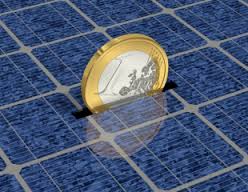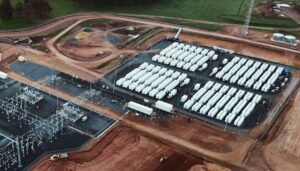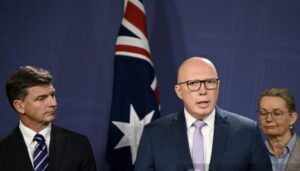There are currently two things missing from the Australian solar market right now – a fair price for electricity exported from rooftop panels back into the grid, and a corporate customer base that could support large scale solar.
 So, may be it’s time for your bank to step in to the market – offering a fair price for rooftop solar, and writing off-take agreements that could kick-start the utility-scale solar market in Australia.
So, may be it’s time for your bank to step in to the market – offering a fair price for rooftop solar, and writing off-take agreements that could kick-start the utility-scale solar market in Australia.
Here’s how it might work.
The first issue about a fair price for solar has been a blight on solar markets in this country, that we have discussed at length, and here and here and here. A recent story about tariffs paid and received by a solar household sparked a huge response from readers.
Basically, because pricing regulators in Australia cannot bring themselves to recognize the environmental, grid and other benefits of rooftop solar, they only require retailers in Australia to pay around 6c/kWh – if anything – for electricity exported back into the grid. And for most households, that can be more than half their output.
The retailer will then sell those very same electrons –probably to your neighbour – for whatever the prevailing retail price is – mostly likely at least 30c/kWh but possibly more than 50c/kWh for those on peak tariffs.
That’s a handsome profit for the retailers, even with various “unavoidable” grid charges. And, of course, it doesn’t make for retailers winning any popularity contests among existing solar households, who now make up more than one fifth of all customers.
It is more likely to be self-defeating, creating an incentive for more people to install battery storage, and in some cases to leave the grid altogether – with all the issues about over-capitalisation and social equity that would entail.
And to get an idea about what the retailers really think about the “fair” value of solar, they are about to launch solar products, where they will sell households the solar electricity from solar systems on their rooftops, probably for around 25c/kWh. The only difference being that the retailer will own the system, rather than the household.
So, why not sell your excess solar output to your bank. Well, you can’t right now.
But as the banks have made clear in recent months, they are rolling in money and craving to be loved by their customers.
Buying solar directly from customers a large scale solar farm could save them money. They could offer to buy the output for between 12c-15c/kWh, package up the output through an intermediary, and boost their green credentials and probably cut their electricity bill at the same time.
Not only would it deliver economic savings, it would be a massive reputational boost for the banks too. And it could help lock in brand and customer loyalty.
Some in the solar market say the incumbent utilities are working on the assumption that it can’t be done, but they say that the utilities simply don’t understand the ability to aggregate customers and output. New technologies are making this easier.
It’s not just households that like having solar on the roof. Businesses are becoming increasingly interested, and around 20 per cent of new installations are going on the roofs of commercial and industrial properties.
What is not happening much in Australia yet is the large-scale solar arrays that could offset much of the electricity demand. It is happening at smaller scale – particularly with wineries and food manufacturers, and other businesses with large daytime consumption. IKEA, for instance, has signed up for more than 1MW of rooftop solar, and Woolworths and Coles are believed to be looking at it.
But where are the Apple’s of Australia. Last week, the corporate giant signed to take most of the output from a new solar farm in California, and was followed a few days later by Google, who signed up for a new wind farm.
In Australia, large scale power purchase agreements have been limited to installations such as desalination plants, which have helped fund and take output from wind farms in Victoria, and the Greenough River solar plant in W.A.
Miners are starting to get in to the act. Rio Tinto and Sandfire Resources are both installing solar plus storage arrays, and many more are looking at the possibility.
Councils are too. The Sunshine Coast council is looking at a 10-15MW solar farm, and Fremantle Council, as we report today, is looking at a 10MW solar farm.
But where are the other big corporate customers. Big power developers are hopeful that they are now emerging from the shadows.
Power hungry data centres are one obvious target. But here, again, in an opportunity for the banks. If, for instance, a major bank was to sign up to take an off-take agreement from a major solar farm – say for 15c/kWh – that would probably be enough to get it going.
Once again, they would likely save on electricity bills, and generate a huge reputational boost. They could even provide the finance!
Solar developers say they are starting to see a bit of interest for large-scale off-take agreements, although it is early in the piece. The uncertainty over the renewable energy target, and what would happen with renewable energy certificates, is a key component.
“We are starting to get some interest in direct procurement in projects off-site,” says one. The question for many corporate customers is what sort of tariffs they are seeking to offset. And what sort of deal the incumbents would be prepared to offer if they see that such customers would choose to go solar instead.










